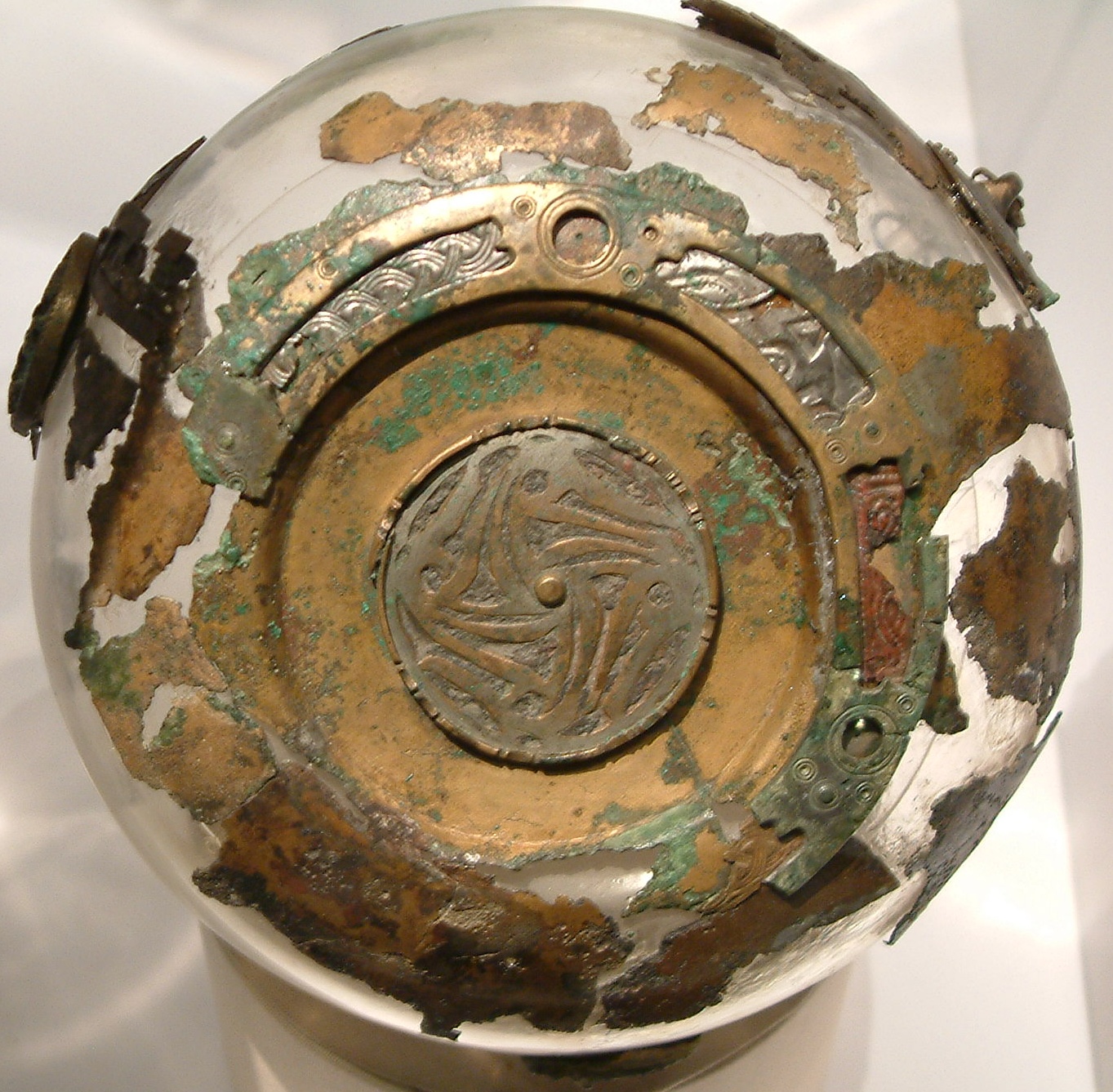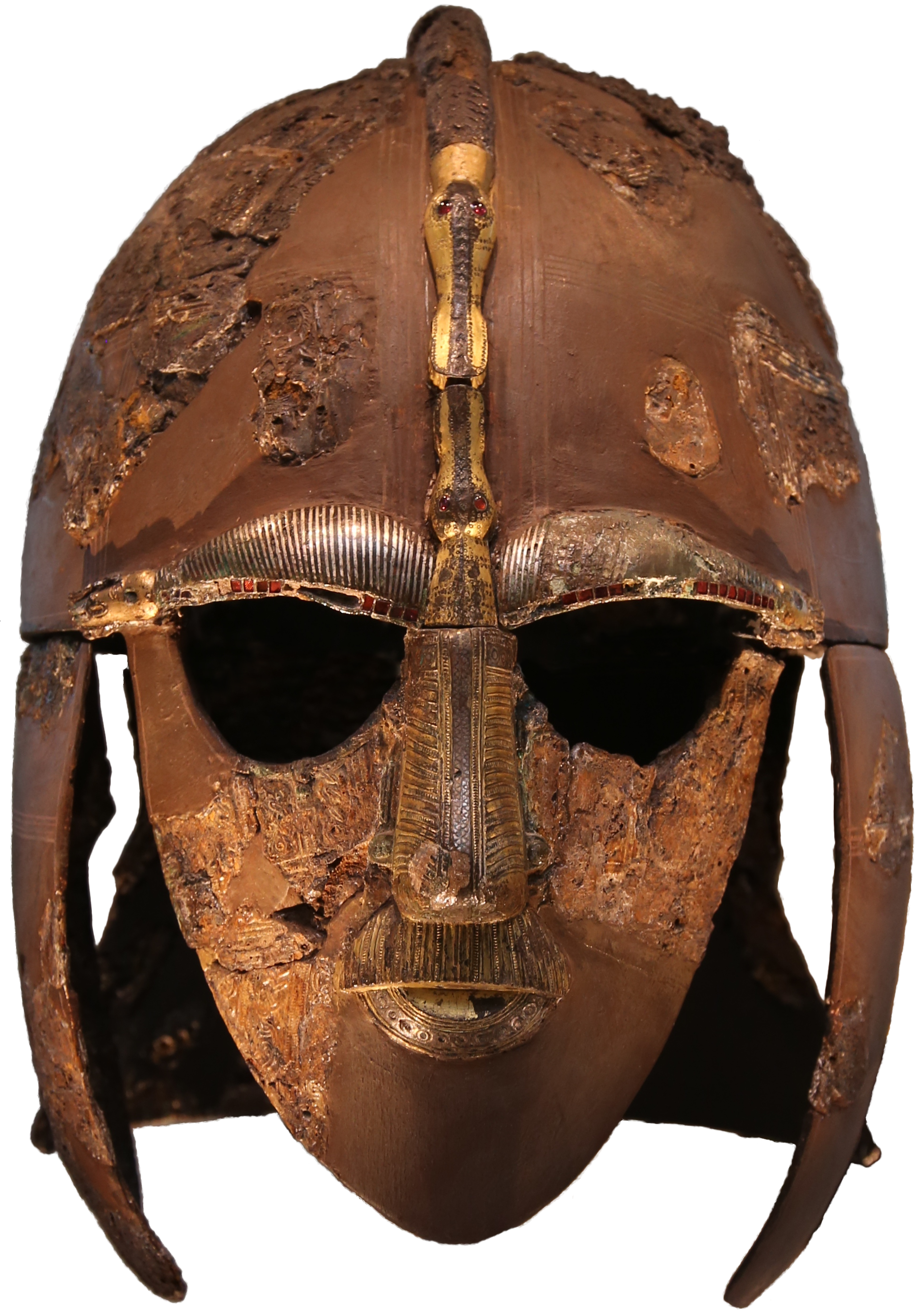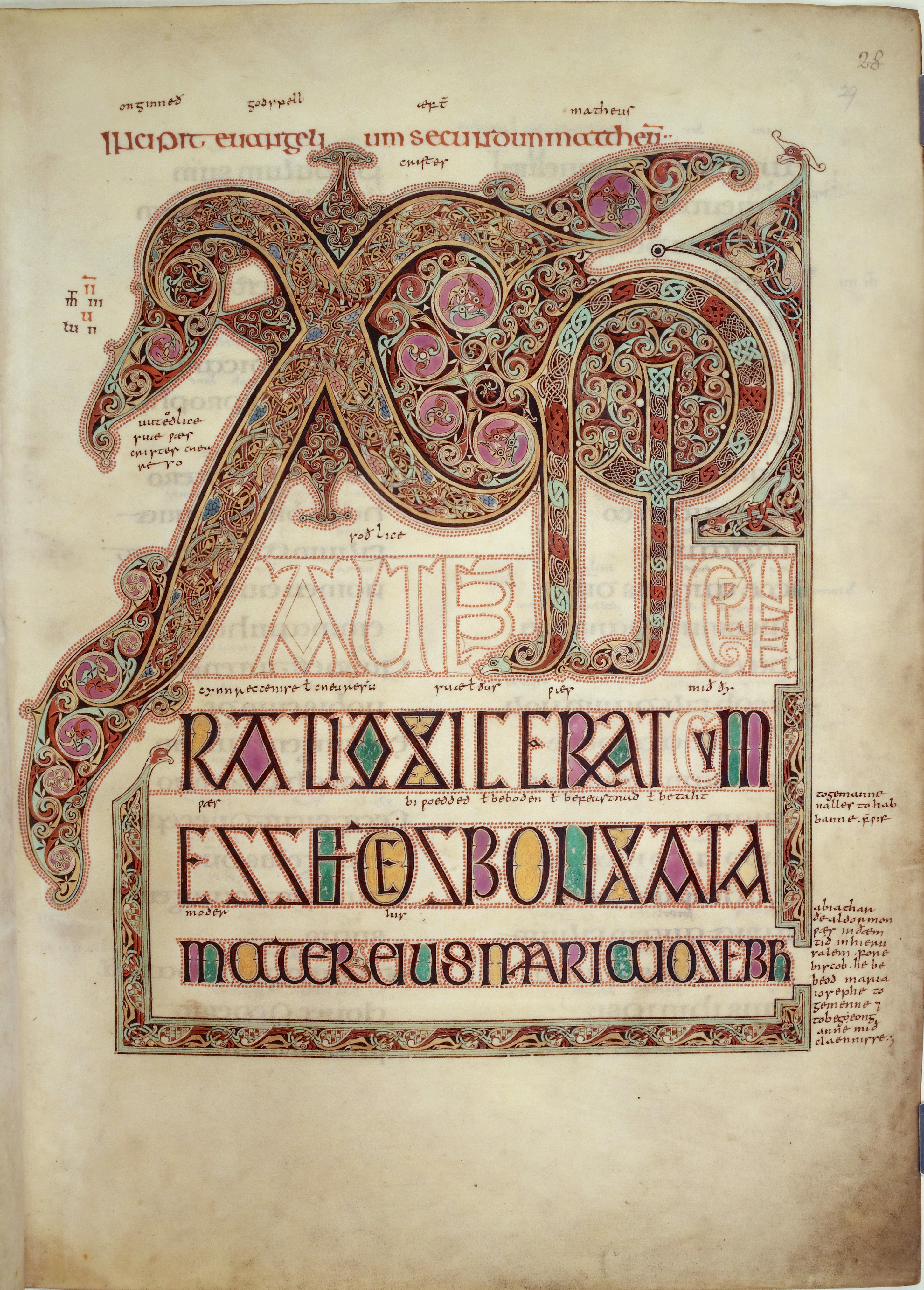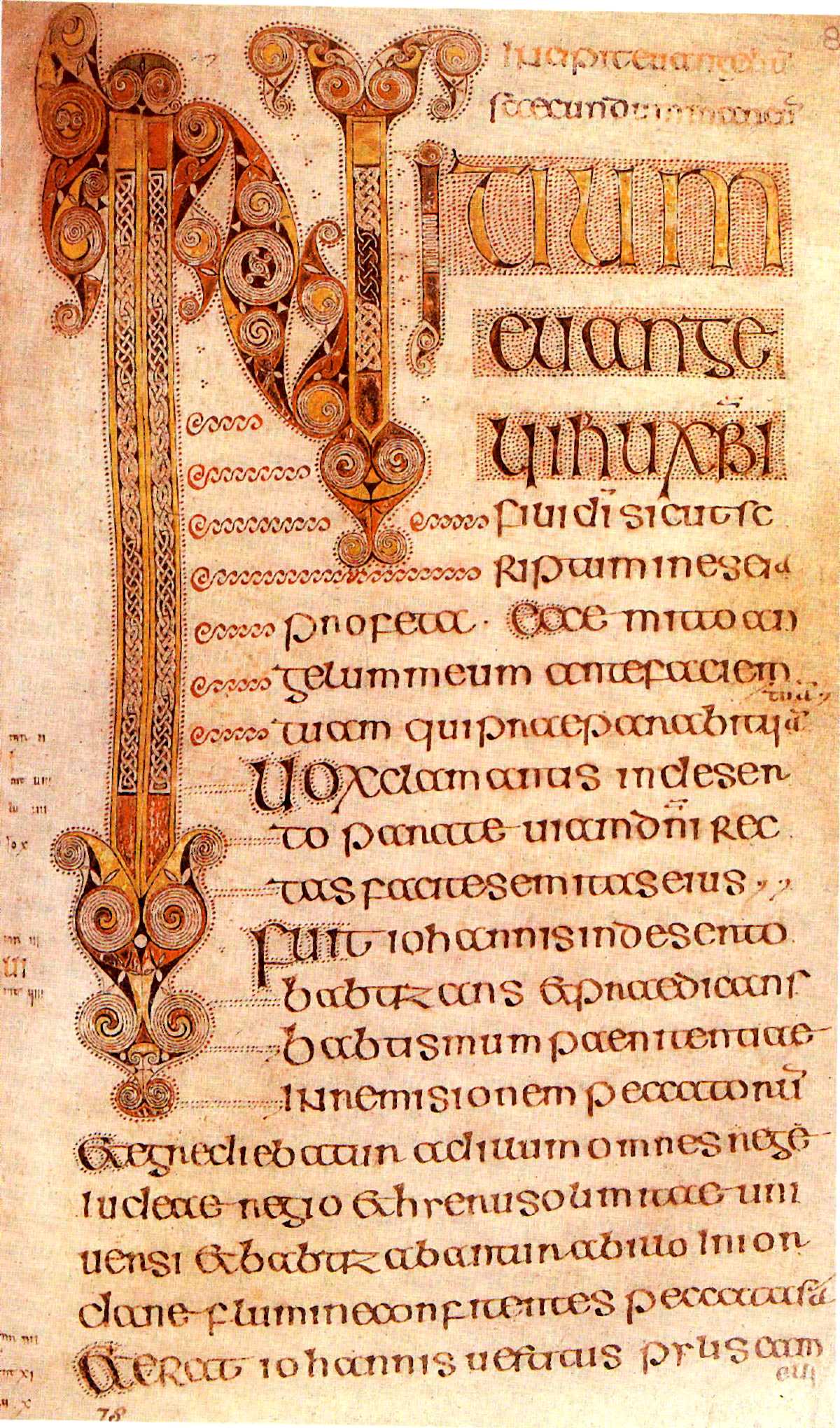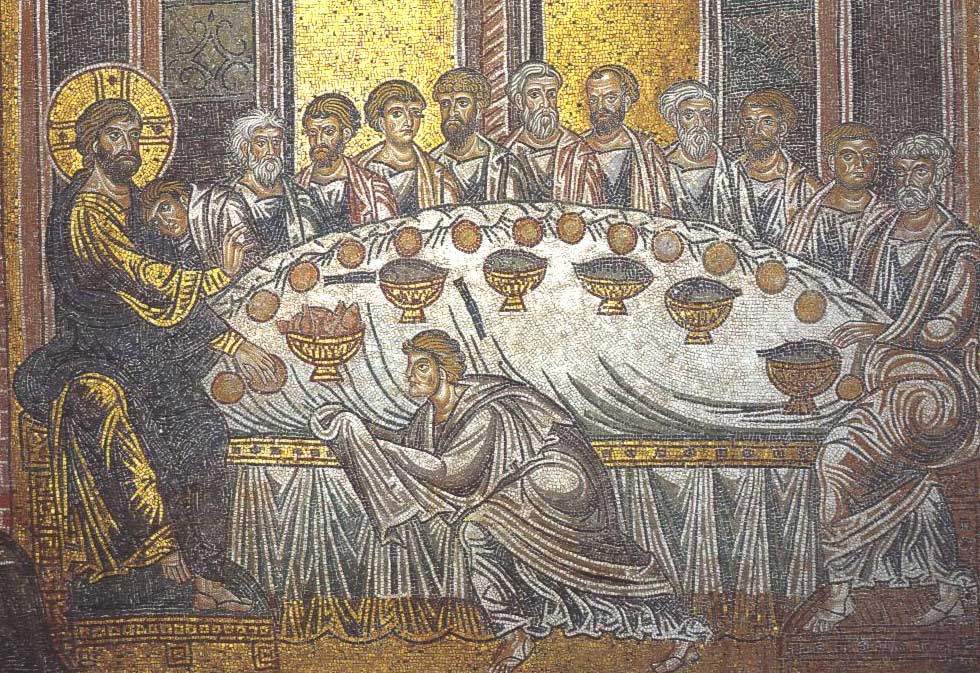|
Hanging Bowl
Hanging bowls are a distinctive type of artefact of the period between the end of Roman rule in Britain in c. 410 AD and the emergence of the Christian Anglo-Saxons, Anglo-Saxon kingdoms during the 7th century, continuing rather later. The surviving examples have mostly been found in Anglo-Saxon graves, but there is general agreement that they reflect Celtic art, Celtic traditions of decoration, albeit sometimes combined with Anglo-Saxon art, Anglo-Saxon influences. The bowls are usually of thin beaten bronze, between 15–30 cm (6-12 inches) in diameter, and dished or cauldron-shaped in profile. Typically they have three decorated plates ('escutcheons') applied externally just below the rim to support hooks with rings, by which they were suspended. The ornament of these plates is often very sophisticated, and in many cases includes beautiful coloured Vitreous enamel, enamel work, commonly in champlevé and using spiral motifs. Although their designs and manufacture are ... [...More Info...] [...Related Items...] OR: [Wikipedia] [Google] [Baidu] |
Sutton
Sutton (''south settlement'' or ''south town'' in Old English) may refer to: Places United Kingdom England In alphabetical order by county: * Sutton, Bedfordshire * Sutton, Berkshire, a List of United Kingdom locations: Stu-Sz#Su, location * Sutton-in-the-Isle, Ely, Cambridgeshire * Sutton, Peterborough, Cambridgeshire * Sutton, Cheshire East, a civil parish in Cheshire ** Sutton Lane Ends, a village in Cheshire * Sutton, Middlewich, Cheshire * Sutton Weaver, Cheshire West and Chester * Great Sutton, Ellesmere Port, Cheshire * Guilden Sutton, Chester, Cheshire * Little Sutton, Cheshire, Ellesmere Port * Sutton on the Hill, Derbyshire * Sutton Scarsdale, Derbyshire * Sutton, Devon, a hamlet near Kingsbridge * Sutton, a historic name of Plymouth, Devon ** Sutton Harbour, Plymouth, Devon * Sutton Waldron, Dorset * Sutton, Essex * Long Sutton, Hampshire * Sutton Scotney, Hampshire * Sutton, Herefordshire * East Sutton, Kent * Sutton, Kent * Sutton-at-Hone and Hawley, Dartford, Kent ... [...More Info...] [...Related Items...] OR: [Wikipedia] [Google] [Baidu] |
Rupert Bruce-Mitford
Rupert Leo Scott Bruce-Mitford (14 June 1914 – 10 March 1994) was a British archaeologist and scholar. He spent the majority of his career at the British Museum, primarily as the Keeper of the Department of British and Medieval Antiquities, and was particularly known for his work on the Sutton Hoo ship-burial. Considered the "''spiritus rector''" of such research, he oversaw the production of the monumental three-volume work ''The Sutton Hoo Ship-Burial'', termed by the president of the Society of Antiquaries as "one of the great books of the century". Though Bruce-Mitford was born in London, the preceding two generations had lived largely abroad: his maternal grandparents as early settlers of British Columbia, his paternal grandparents as missionaries in India, and his parents as schoolteachers recently returned from Japan. When Bruce-Mitford was five, his father, who had returned to Japan two years earlier, died. His mother was left to raise the four sons, of which Bruce- ... [...More Info...] [...Related Items...] OR: [Wikipedia] [Google] [Baidu] |
Lincolnshire
Lincolnshire (), abbreviated ''Lincs'', is a Ceremonial counties of England, ceremonial county in the East Midlands and Yorkshire and the Humber regions of England. It is bordered by the East Riding of Yorkshire across the Humber estuary to the north, the North Sea to the east, Norfolk, Cambridgeshire, Northamptonshire and Rutland to the south, and Leicestershire, Nottinghamshire and South Yorkshire to the west. The county is predominantly rural, with an area of and a population of 1,095,010. After Lincoln (104,565), the largest towns are Grimsby (85,911) and Scunthorpe (81,286). For Local government in England, local government purposes Lincolnshire comprises a non-metropolitan county with seven districts, and the unitary authority areas of North Lincolnshire and North East Lincolnshire. The last two areas are part of the Yorkshire and the Humber region, and the rest of the county is in the East Midlands. The non-metropolitan county council and two unitary councils collabora ... [...More Info...] [...Related Items...] OR: [Wikipedia] [Google] [Baidu] |
Witham Bowl
The Witham bowl is a missing piece of Anglo-Saxon silverware, described by T. D. Kendrick in '' The Antiquaries Journal'' in 1941 as "the most remarkable piece of pre-Conquest plate ever found in England". It was last seen at the National Exhibition of Works of Art at Leeds General Infirmary in 1868, when it was owned by the MP John Heywood Hawkins. Discovery The hanging bowl is named after the River Witham in Lincolnshire, where it was discovered at Washingborough in 1816, along with several other articles - including a wooden canoe - in the course of drainage works. Its discovery was reported in the ''Stamford Journal'' of 19 April 1816. It is thought to have been made in the late 8th or early 9th century, and has a diameter of approximately and height of approximately . Description The richly decorated piece is an evolved "C bowl" with a broad circular indentation underneath. Foliate and vine-scroll filigree work decorates the top and bottom surfaces of the flat cent ... [...More Info...] [...Related Items...] OR: [Wikipedia] [Google] [Baidu] |
Woodbridge, Suffolk
Woodbridge is a port town and civil parish in the East Suffolk District, East Suffolk district of Suffolk, England. It is up the River Deben from the sea. It lies north-east of Ipswich and around north-east of London. In 2011 it had a population of 7,749. The town is close to some major archaeological sites of the Anglo-Saxons, Anglo-Saxon period, including the Sutton Hoo burial ship. It is well known for its boating harbour and tide mill next to the River Deben, in the Suffolk & Essex Coast & Heaths National Landscape. Several festivals are held. As a "gem in Suffolk's crown" (according to The Suffolk Coast tourist site) it has been named the best place to live in the East of England. Etymology Historians disagree over the etymology of Woodbridge. ''The Dictionary of British Placenames'' (2003) suggests that it is a combination of the Old English wudu (wood) and brycg (bridge). The Sutton Hoo Society's 1988 magazine ''Saxon'' points out, however, that there is no suitable si ... [...More Info...] [...Related Items...] OR: [Wikipedia] [Google] [Baidu] |
Lindisfarne Gospels
The Lindisfarne Gospels (London, British Library Cotton MS Nero D.IV) is an illuminated manuscript gospel book probably produced around the years 715–720 in the monastery at Lindisfarne, off the coast of Northumberland, which is now in the British Library in London. The manuscript is considered one of the finest works in the unique style of Hiberno-Saxon or Insular art, combining Mediterranean, Anglo-Saxon art, Anglo-Saxon and Celtic art, Celtic elements. The Lindisfarne Gospels are presumed to be the work of a monk named Eadfrith of Lindisfarne, Eadfrith, who became Bishop of Lindisfarne in 698 and died in 721.Lindisfarne Gospels British Library. Retrieved 2008-03-21 Current scholarship indicates a date around 715, and it is believed they were produced in honour of Cuthbert of Lindisfarne, St. Cuthbert. However, som ... [...More Info...] [...Related Items...] OR: [Wikipedia] [Google] [Baidu] |
Book Of Durrow
The Book of Durrow is an illuminated manuscript gospel book dated to that contains the Vulgate Latin text of the four Gospels, with some Irish variations, and other matter, written in Insular script, and richly illustrated in the style of Insular art with four full-page Evangelist symbols, six carpet pages, and many decorated initials.Moss (2014), p. 229 Its origin and dating has been subject to much debate. The book was probably made in Ireland, in or near Durrow Abbey, County Offaly, founded by Colum Cille (or Columba) in the 6th century, rather than the sometimes proposed origin of Kingdom of Northumbria, Northumbria, a region that had close political and artistic ties with Ireland, and like Scotland, also venerated Colum Cille.O'Neill (2014), p. 14There is no record of it ever having been outside of Ireland. Historical records indicate that the book was probably at Durrow Abbey by 916, making it one of the earliest extant Insular manuscripts. The abbey did not survive the ... [...More Info...] [...Related Items...] OR: [Wikipedia] [Google] [Baidu] |
Oracular Cortina
An oracle is a person or thing considered to provide insight, wise counsel or prophetic predictions, most notably including precognition of the future, inspired by deities. If done through occultic means, it is a form of divination. Description The word ''oracle'' comes from the Latin verb ''ōrāre'', "to speak" and properly refers to the priest or priestess uttering the prediction. In extended use, ''oracle'' may also refer to the ''site of the oracle'', and the oracular utterances themselves, are called ''khrēsmoí'' (χρησμοί) in Greek. Oracles were thought to be portals through which the gods spoke directly to people. In this sense, they were different from seers (''manteis'', μάντεις) who interpreted signs sent by the gods through bird signs, animal entrails, and other various methods.Flower, Michael Attyah. ''The Seer in Ancient Greece.'' Berkeley: University of California Press, 2008. The most important oracles of Greek antiquity were Pythia (priestess ... [...More Info...] [...Related Items...] OR: [Wikipedia] [Google] [Baidu] |
Fulcrum (mechanics)
A lever is a simple machine consisting of a beam or rigid rod pivoted at a fixed hinge, or '' fulcrum''. A lever is a rigid body capable of rotating on a point on itself. On the basis of the locations of fulcrum, load, and effort, the lever is divided into three types. It is one of the six simple machines identified by Renaissance scientists. A lever amplifies an input force to provide a greater output force, which is said to provide leverage, which is mechanical advantage gained in the system, equal to the ratio of the output force to the input force. As such, the lever is a mechanical advantage device, trading off force against movement. Etymology The word "lever" entered English around 1300 from . This sprang from the stem of the verb ''lever'', meaning "to raise". The verb, in turn, goes back to , itself from the adjective ''levis'', meaning "light" (as in "not heavy"). The word's primary origin is the Proto-Indo-European stem , meaning "light", "easy", or "nimble", amo ... [...More Info...] [...Related Items...] OR: [Wikipedia] [Google] [Baidu] |
12 - 000,w,150v
1 (one, unit, unity) is a number, numeral, and glyph. It is the first and smallest positive integer of the infinite sequence of natural numbers. This fundamental property has led to its unique uses in other fields, ranging from science to sports, where it commonly denotes the first, leading, or top thing in a group. 1 is the unit of counting or measurement, a determiner for singular nouns, and a gender-neutral pronoun. Historically, the representation of 1 evolved from ancient Sumerian and Babylonian symbols to the modern Arabic numeral. In mathematics, 1 is the multiplicative identity, meaning that any number multiplied by 1 equals the same number. 1 is by convention not considered a prime number. In digital technology, 1 represents the "on" state in binary code, the foundation of computing. Philosophically, 1 symbolizes the ultimate reality or source of existence in various traditions. In mathematics The number 1 is the first natural number after 0. Each natural number, ... [...More Info...] [...Related Items...] OR: [Wikipedia] [Google] [Baidu] |
Last Supper
Image:The Last Supper - Leonardo Da Vinci - High Resolution 32x16.jpg, 400px, alt=''The Last Supper'' by Leonardo da Vinci - Clickable Image, ''The Last Supper (Leonardo), The Last Supper'' (1495-1498). Mural, tempera on gesso, pitch and mastic, 700 x 880 cm (22.9 x 28.8 ft). In the Santa Maria delle Grazie, Milan, Santa Maria delle Grazie Church, Milan, Italy, it is Leonardo da Vinci's dramatic interpretation of Jesus' last meal before death. Depictions of the Last Supper in Christian art have been undertaken by artistic masters for centuries, Leonardo da Vinci's late-1490s mural painting, being the best-known example. ''(Clickable image—use cursor to identify.)'' poly 550 2550 750 2400 1150 2300 1150 2150 1200 2075 1500 2125 1525 2300 1350 2800 1450 3000 1700 3300 1300 3475 650 3500 550 3300 450 3000 Bartholomew the Apostle, Bartholomew poly 1575 2300 1625 2150 1900 2150 1925 2500 1875 2600 1800 2750 1600 3250 1425 3100 1400 2800 1375 2600 James, son of Alphaeus, James Min ... [...More Info...] [...Related Items...] OR: [Wikipedia] [Google] [Baidu] |
